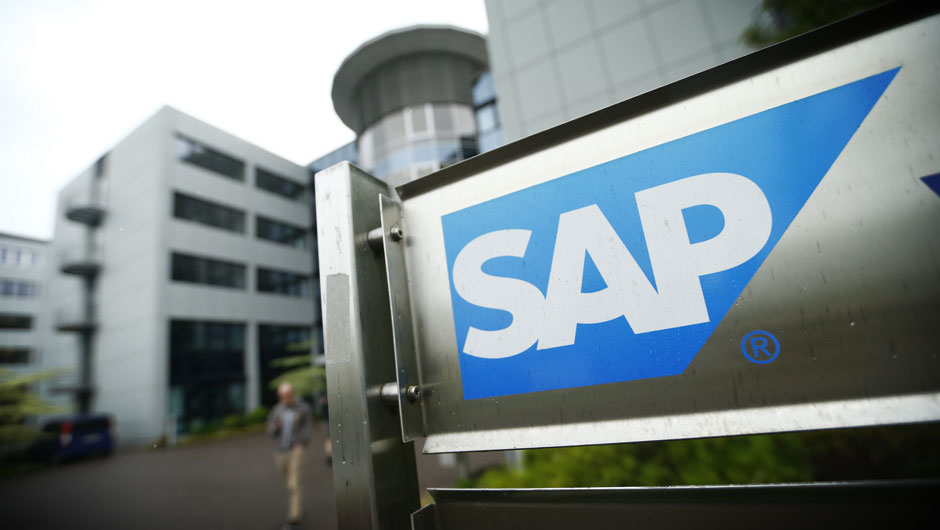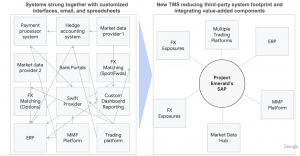Google pairs with SAP to reshape treasury

Google has surprised market observers by cutting back on its own technology and basing a broad restructuring of its treasury systems on SAP instead.
In the 15 years from its IPO to Q2 19 Google grew from $450 million of cash and investments on its balance sheet to $120 billion. Small wonder, then, that its treasury systems had failed to keep up.
“At that level of growth, a treasury can only be focused on doing a few things very well,” acknowledges Shaun Hazen, FX and Commodities Principal at Alphabet (Google’s parent).
Reflecting Google’s massive post-IPO growth, “over 15 years [treasury] cobbled together a framework of systems that did particular tasks very well, but lacked integration,”. This hodgepodge was characterised by “an unhealthy amount of Gmail between teams, spreadsheets and manual data entry,” Hazen comments.
It involved “a lot of manual processes, which was really not efficient and could not scale,” adds Sid Sanghvi, Lead Engineering Program Manager at Alphabet.
That in turn led Google treasury professionals to suggest in the company’s annual employee survey that their focus was falling away from “the cool things that that Googlers like to work on”, Hazen reports. Rather than high-quality investment management and risk management decision-making, they were spending much of their time on non-value-added activities.
Total reconstruction
This frustration was the “catalyst” for the company’s recent total reconstruction of its treasury systems – more dramatic than a typical TMS upgrade.
It approached the task (named ‘Project Emerald’) with a series of goals. In particular, it sought to get operating cash balances down, to establish an in-house bank and to put appropriate controls in place to meet the growing regulatory burden in many jurisdictions, while minimising the number of systems it uses.

More generally, it aimed “to really use this opportunity to transform the way we operate treasury and put in all the new efficiencies and technology that Google is good for, looking at avenues of using machine learning/AI in the future,” Sanghvi comments.
This led it to decide that “pretty much, we’re going to scrap everything that we do today and start completely fresh.”
Google set itself the target of a 12 to 18-month implementation. Despite the challenge of this “pretty aggressive task”, in Sanghvi’s terms, it succeeded.
“We got there. There’s still work to be done. But we did go live on May 1. And since then we’ve been adding more and more functionality to our current suite of solutions,” he says.
This accelerated timescale paid off for Google compared to a more elongated multi-year process that could be waylaid by acquisitions or other large corporate changes, Hazen argues. “Accelerating those benefits paid dividends…the impact is maybe two or three fold because you get the full end to end process.”
SAP at the core
Like fellow tech giant Intel, Google decided to ditch most of its in-house custom solutions. Despite Google’s stance that “we don’t typically like to buy anything,” as Sanghvi puts it, the new system is built around SAP at its core. The company retained just five of its own ‘first-party’ applications to integrate into this core while purging more than 30.
It selected SAP for its leadership in enterprise solutions, as well as its partnership across several product teams to innovate with Google on foreign exchange and cash management (see below), Hazen comments.
This restructured system is hosted on Google Cloud Platform (GCP) and linked through SAP Cloud Connector. It involved simplifying as many as 80 treasury processes and automating the vast majority of them, moreover.
“We’ve automated about 90% of our processes end to end”, Sanghvi notes. “It’s pretty much touchless except for the trading part, where we still have our brilliant traders make some good decisions. But from a back office and execution standpoint pretty much everything is automated.”

Unusually, Google’s transformation of its systems began with its treasury module. As Sanghvi emphasises, a more typical sequence would be for treasury to inherit new systems and architecture from the rest of the finance department. “We used kind of a unique approach…something completely opposite,” he says.
‘Co-innovation’
At the same time, Google sought to ‘co-innovate’ solutions with SAP to overcome ‘pain points’ for the broader treasury industry where standard solutions don’t work. These were mostly in the area of trading – specifically, hedge management and trading, and liquidity and payments.

As a result of Google and SAP’s daily collaboration and testing over months, it gained multi-platform support. This met Google’s appetite to “to be unbound and unpackage some of these systems that tend to put you in an environment where you rely on a few key ones,” Hazen explains.
Now approved trade requests for all treasury products route into a dedicated trading app. There they can be split, netted or blocked before going out electronically to the appropriate trading platform or by a trader’s traditional phone call to a counterparty.
In addition, the new system provides automated intra-day cash reconciliation rather than end of day. “When we have large multi-billion dollar settlements happening on any day, we want to be able to have that automatically reconciled as the trading day progresses,” he notes.
Similarly, the company’s offshore FX transactions are generated and approved within the system even if regulatory requirements for some currencies require them to then be passed to bank portals.
These examples illustrate how, in Hazen’s words, “the system is becoming more of an enabler instead of a reason why we’re not doing things: that’s a big shift in how we operate.”